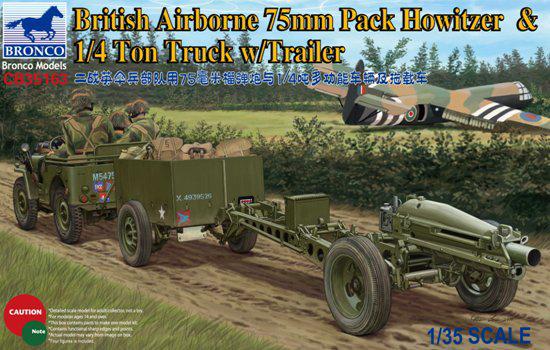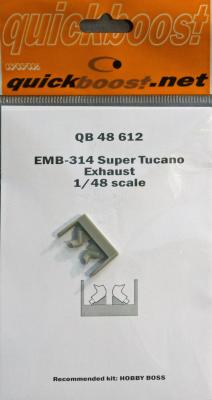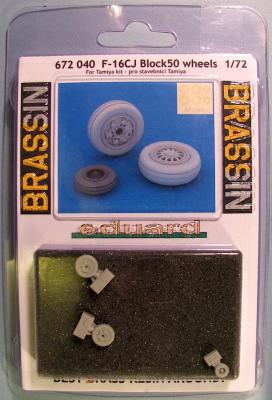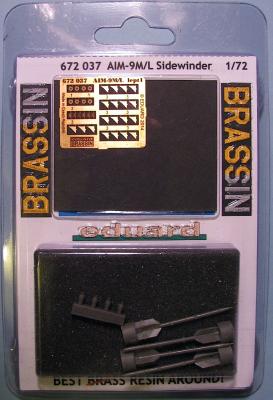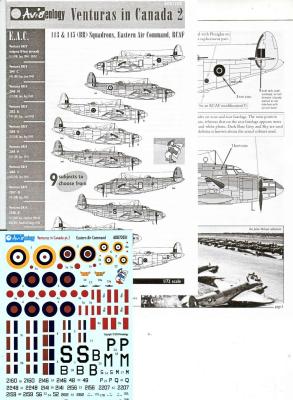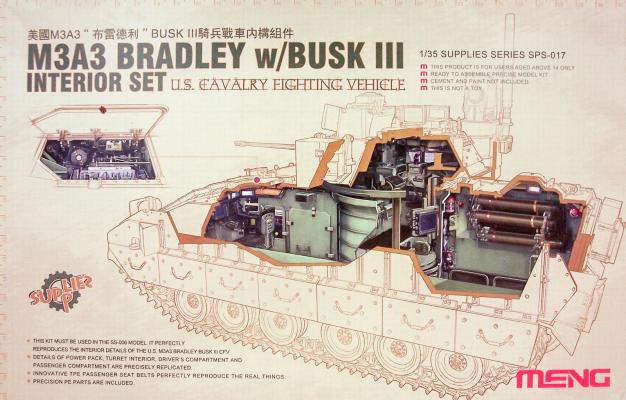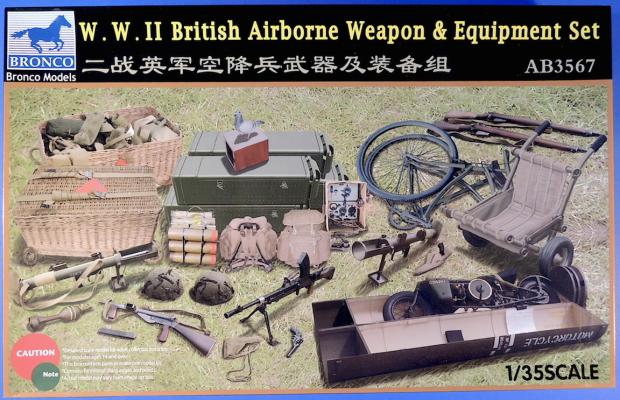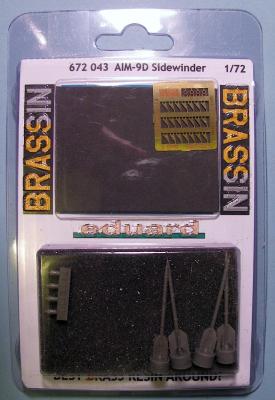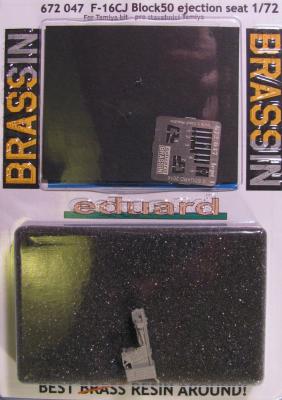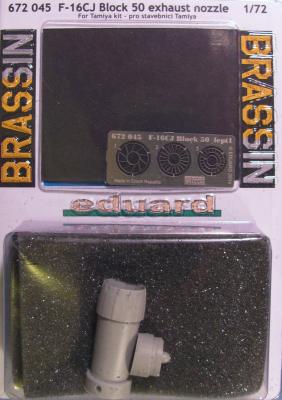Over time, I find myself becoming fonder and fonder of Bronco Models and their products. They consistently seem to offer fascinating subjects done with a real flair, and this set is no exception. It consists of a 75mm Pack Howitzer along with a jeep, trailer, four riding paratroopers, and a wealth of personal equipment. The box is packed with good, firm plastic which takes fine detail well, and it also includes three sheets of photo-etch and two decal sheets: one for the equipment and one for the soldiers. As this is a variant of the regular jeep offered by Bronco, you wind up with a host of useful extras, including wheels/tires, windshields, and steering wheels. The instructions are actually a 27-page full-color manual, and they are extremely well laid out and informative. In addition, for the most part, parts are logically laid out on the sprues. This helps in piecing together this complicated set and saves an immense amount of time searching for some elusive bit.
What's New
Normally, I don’t build outside of my pre-1945 comfort zone, but I’ve always liked the shape and look of the Tucano and Super Tucano aircraft. When HobbyBoss released their 1/48 scale kit of the Super Tucano recently, I couldn’t pass on making the purchase. As with any decent kit, there is always room for a little improvement. To that end, Quickboost has released three new resin details for the HobbyBoss Super Tucano kit.
|
Part # |
Part Name |
Cost |
|---|---|---|
|
$6.50 |
One of the latest releases from Eduard in their Brassin line are a set of wheels meant to replace the kit provided ones in the Tamiya 1/72 scale F-16CJ Fighting Falcon. Consisting of three resin parts and a set of masks to aid in airbrushing the wheels and tires, the set can be used to dress up the appearance of the Tamiya kit. The F-16CJ Block 50 release by Tamiya follows their impressive renditions first rolled out in 1/32 scale, and later in 1/48.
Developed jointly by the US Air Force and US Navy starting in 1971, the AIM-9L was a vastly improved Sidewinder that was based on the H-model. The missile used All-Aspect Capability against maneuvering targets, as well as high-speed targets. The forward canards were longer in span, and of a double-delta design. Production began in 1978 with over 16,000 missiles being built by Philco-Ford, Raytheon, BGT (Germany), and Mitsubishi.
For any who have missed it, Aviaeology out of Canada produces decals specific to many Canadian themed subjects. The first thing that hits you when you purchase one of their sets is the detail provided to replicate specific aircraft. The research going into these decals is second to none. This set includes markings for nine different aircraft in a variety of schemes. Here’s a quick list:
History
The M3A3 Bradley w/BUSK III CFV is the very latest model fielded by the US Army. The Cavalry Fighting Vehicle’s (CFV) primary duties are reconnaissance and scouting. The CFV Bradleys are normally assigned to Tank Battalions or Cavalry Divisions. The Infantry Fighting Vehicles (IFV) Bradleys are used to transport troops into battle and out.
MENG has followed their kit of the successful M2A3 Bradley (IFV) w/BUSK III with the new M3A3 Bradley (CFV) w/BUSK III. They have separated the main vehicle and the interior into two kits and packaged both separately. This gives modelers the option to build the vehicle kit without the interior at a cost savings.
This review covers MENG’s M3A3 Bradley w/BUSK III Interior Set. The vehicle itself is reviewed separately at: M3A3 Bradley w/BUSK III
This is a very comprehensive accessory set for British WWII Airborne vehicles or dioramas. The parts are well molded, and have very good detail. There are many very small parts that will require care to assemble, but will result in nice accessories.
The kit includes a Welbike that can be assembled unfolded or folded for transport, a Welbike container that can be either open or closed, a collapsible trolley cart, BSA military bicycle that can be assembled either unfolded or folded, No. 18 Wireless Radio, various weapons, pigeon container, PIAT, several PIAT ammo containers, wicker pannier, airborne helmets, airborne rucksack, and type B airborne container.
The weapons include Sten MK IVs, PIAT gun and ammo, Webley revolvers, Lee Enfield rifles, and Bren guns.
Developed as a follow up to the B and C models of the Sidewinder, the AIM-9D featured a Nitrogen cooled Infrared (IR) seeker and utilized the Hercules MK 36 solid-fuel rocket motor. Philco-Ford and Raytheon produced about 1000 of the missiles between 1965 and 1969. The missile was 9 feet, 5 inches long; 24.8 inches across the rear fins, and had a diameter of 5 inches. Weighing in at 195 pounds (25 pounds belonging to the warhead), the missile could travel at over Mach 2.5 with a range of 9.7 nautical miles. The AIM-9D is credited with aerial victories over twenty-two aircraft during the Vietnam War (8 MiG-21 and 14 MiG-17’s) being launched from F-8E/C/H Crusaders and F-4B and J Phantom II’s of the US Navy.
One of the latest releases from Eduard in their Brassin line is this ejection seat meant to replace the kit part in the Tamiya 1/72 scale F-16CJ Fighting Falcon. The Eduard set consists of one resin part and a photoetch fret with eight items that can be used to dress up the appearance of the cockpit of the Tamiya kit. The F-16CJ Block 50 release by Tamiya follows their impressive renditions first rolled out in 1/32 scale, and later in 1/48.
One of the latest releases from Eduard in their Brassin line is an exhaust nozzle meant to replace the kit provided one in the Tamiya 1/72 scale F-16CJ Fighting Falcon. The set consists of two resin parts and a photoetch fret that can be used to dress up the appearance of the Tamiya kit. The F-16CJ Block 50 release by Tamiya follows their impressive renditions first rolled out in 1/32 scale, and later in 1/48.

